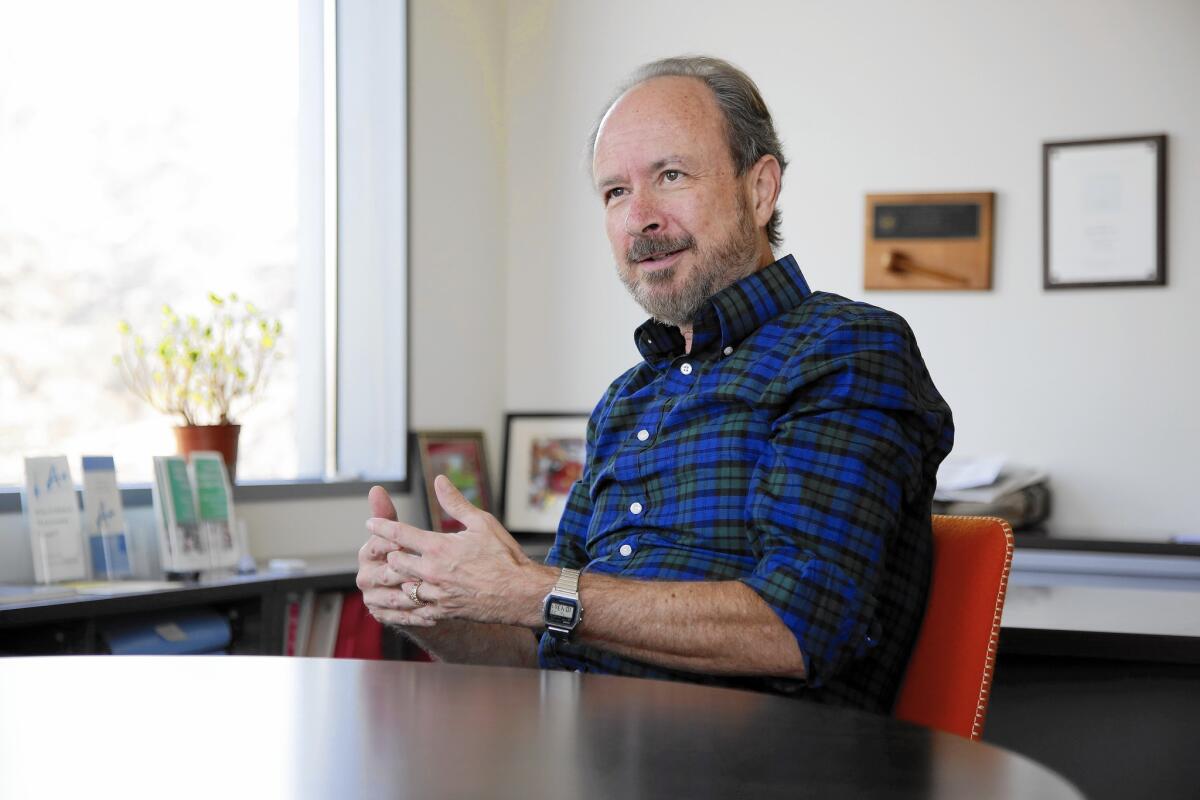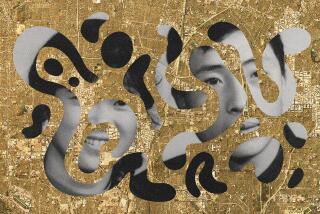Great Read: Team of sleuths stalks cancer in L.A. County

Three men hunch over a table, scrutinizing a document. Maps paper the walls around them.
The moment, captured in a black-and-white photograph, marks the beginning of a quest to catch a villain.
For more than four decades, this team has been stalking the killerâs every move, trying to identify patterns of attack. They collect and store evidence, filling drawers and file cabinets.
The detectives: researchers at USC.
The bad guy: cancer.
In the late 1960s, university scientists began the Los Angeles County Cancer Surveillance Program, one of the oldest such registries in the world.
It monitors and logs every case of cancer in the region â 1.7 million and counting.
::
A database may not seem like the most formidable opponent, but itâs a powerful tool for understanding cancer: to know whoâs getting it, to calculate survival rates for a population and to track which treatments are and arenât working.
In short, registries are how societies try to prevent people from getting, and dying of, cancer.
âItâs the heart and soul of cancer prevention and control,â says Dr. Ahmedin Jemal with the American Cancer Society.
Over the past several decades, every state in the nation has adopted a law requiring that it maintain a surveillance program. L.A. Countyâs registry, run out of USC in collaboration with the California Department of Public Health, is one of the biggest in the world.
Experts say it offers unparalleled data. Dr. Myles Cockburn, the programâs scientific director, points to the sheer size of the population and diversity of the region, which give researchers a unique look at differences in cancer rates between ethnic groups:
âYou really canât do that anywhere else in the world,â Cockburn says.
::
Sitting in an office in El Sereno, with a quintessential L.A. view of Dodger Stadium and palm trees, Dennis Deapen recalls the programâs beginnings.
Deapen, who has been its director for more than 25 years, is amazed by the doggedness of the workers in the early, pre-digital days.
In the 1970s and â80s, he says, staff hopped in their cars and drove to each hospital and lab in L.A. County. They had to sort through hundreds of thousands of pathology reports, identifying those who tested positive for cancer.
After they made photocopies of the reports, they put in requests to view the patientsâ medical records, which were stored away in manila folders. Then they copied the biographical information onto separate forms for each patient.
Patient name. Age. Sex. Ethnicity. City.
âTheyâd fill in the blanks by hand on this pad of paper,â he says.
Back at the programâs offices, there was one big computer, stored in its own room. âIt broke a lot,â remembers Deapen, whoâs been working in the department in which the program is run since 1977.
From there, another team would input the data into the computer, and the pathology reports were culled for additional information.
Cancer type. Cell type. Date of diagnosis. Date of death.
âBack in the old, old, old days, they literally punched IBM cards,â he remembers.
It was an arduous undertaking, Deapen admits, but the only way to assemble a registry at the time.
âWeâre the biggest county in the nation in terms of population, and at the time, there were a lot more hospitals than there were today,â he says. âI think âherculeanâ and âunbelievableâ are appropriate descriptions of what that task had to look like.â
Almost half a century since the registry was founded, technology and science have changed dramatically, but the program hasnât all that much, Deapen says.
Yes, two-thirds of the pathology records are now delivered electronically. But one-third â those from smaller hospitals and laboratories â are still obtained the way they always have been, with workers getting in their cars and driving over to take a look.
And at the programâs headquarters, 40 workers still click away on keyboards. Though the patient information that comes over electronically can be fed directly into the database, the pathology reports are dictated by pathologists, and there isnât yet software that can turn the paragraphs of those transcripts into database-ready information.
So, Deapen says, workers still must hand-enter âevery single cancer patient report in L.A.â
::
Deapen opens a book, revealing a tangle of colored lines.
âEverything changed. That,â he says, pointing to a pink line in the graph thatâs shooting up, âprecisely tells the story of that.â
One of the most important findings of the program, Deapen explains, was this rapid increase in breast cancer cases among Japanese women who moved to the United States.
When Japanese women first immigrated here, they had remarkably low rates of the cancer. Back home, they ate an agrarian diet â fish, rice and vegetables â exercised by working in the fields and had children early.
âThey had a perfect profile to explain why they had no breast cancer,â says Deapen, who has a doctorate in public health.
But when they moved to the United States, Japanese women got office jobs, stopped picking rice and instead picked up the high-fat American diet. Their breast cancer risk shot up, eventually surpassing that of white women, who historically had the highest rates.
After the registry revealed this trend health workers were able to encourage screenings and healthy behaviors in the Japanese community to try to bring the breast cancer rates back down, Deapen says.
Because of the immense diversity of L.A. County, researchers here have also been able to gather data on ethnic populations for which there wasnât any information before.
For instance, the regionâs Vietnamese population is big enough to calculate cancer rates for them. Those statistics, such as the percentage dying of a certain cancer, are invaluable because thereâs no registry in Vietnam, Deapen says.
He says that the first time he presented this data, a woman came up to him in tears: âSheâd never seen information about her.â
::
Cockburn, the programâs medical director, says that with all the information the registry now has about where cancer is clustered, the team is trying to switch focus slightly.
âWe know a lot about how to prevent cancer,â Cockburn says, âbut thereâs also a huge number of populations that have much higher rates of cancer than they should have and much higher rates of nasty cancers than they should have, so how can we put those things together?â
The registryâs emphasis on preventive care aligns with the Affordable Care Act, the 2010 law that has overhauled the nationâs healthcare system. It aims to keep healthcare costs down by increasing screenings and checkups to prevent people from getting sick in the first place.
And accomplishing that goal, experts say, means there will soon be a lot more registries like L.A. Countyâs, documenting everyoneâs personal characteristics, illnesses and medical care to figure out whatâs making people unhealthy and which treatments work best.
Already, medical information is being recorded more than ever before, with people wearing Fitbits and medical providers typing up patient data in electronic medical records.
âThatâs the wave of the future,â says Jonathan Weiner, health policy professor at Johns Hopkins Bloomberg School of Public Health.
Cancer registries like L.A. Countyâs, he says, can be held up as a miniature version of that future.
::
Deapen remembers that when L.A. Countyâs cancer surveillance program first began, workers gathered samples of all the patientsâ tumors so they could independently verify the diagnoses.
But it turned out the original diagnoses were never wrong, so they eventually stopped testing the samples, he says.
They did, however, continue collecting them.
Today, drawers at USC are filled with hundreds of thousands of tumor samples, sliced and prepared on microscope slides.
They represent every person whoâs had the disease in the last four decades here, a rogues gallery of some of Los Angeles Countyâs most notorious killers.
Follow @skarlamangla on Twitter for more health news.
MORE GREAT READS
A java manâs adventure in Japanese coffee roasting
For former professional drummer Robin Russell, no gig tops Griffith Park
In Calexico, former LAPD official finds a police department in turmoil
More to Read
Sign up for Essential California
The most important California stories and recommendations in your inbox every morning.
You may occasionally receive promotional content from the Los Angeles Times.










